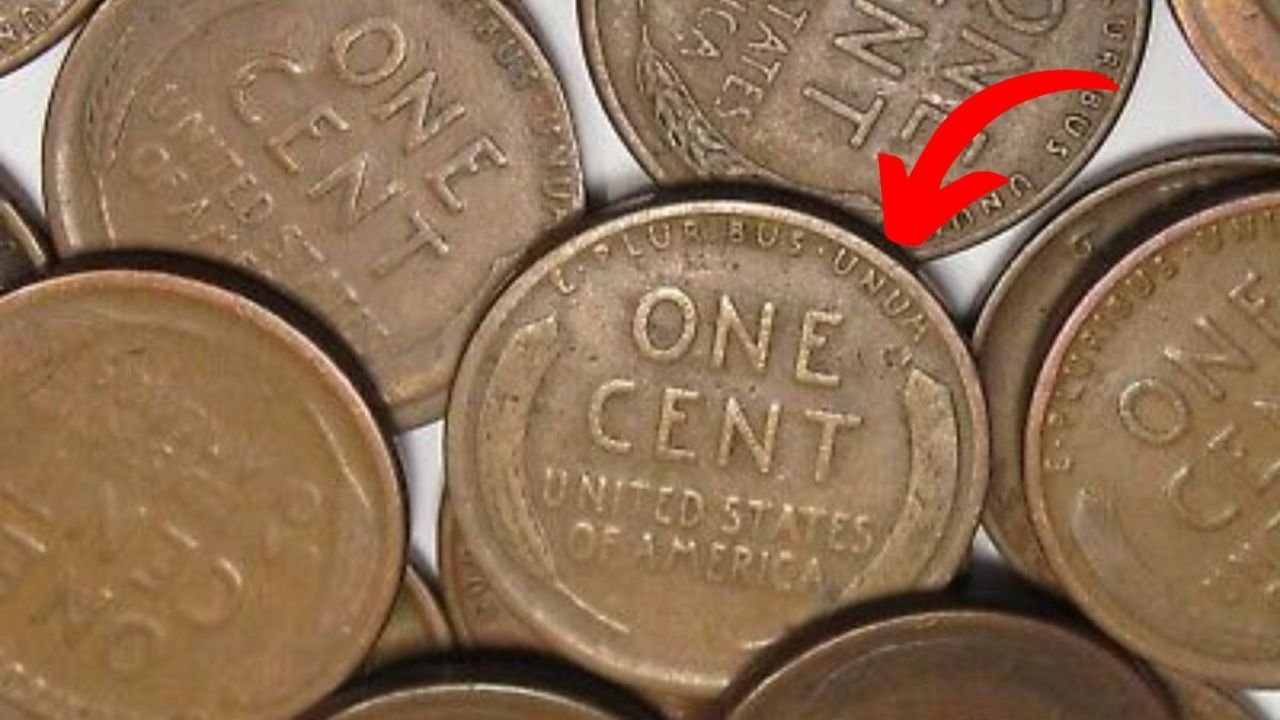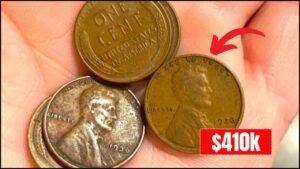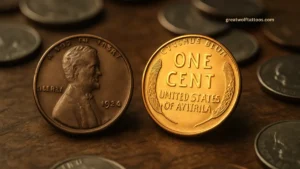Ever tossed a penny into a jar or left it in a drawer? Most of us don’t think twice about those small copper coins, but some rare Lincoln Wheat Pennies could be worth thousands—or even hundreds of thousands! You might have one hiding in your pocket or an old coin jar. Let’s dive into the exciting world of these valuable pennies, learn why they’re so special, and find out how to spot one.
What Are Lincoln Wheat Pennies?
A Bit of History
The Lincoln Wheat Penny first appeared in 1909 to celebrate Abraham Lincoln’s 100th birthday. It was the first U.S. coin to feature a real person instead of symbols like Lady Liberty. Designed by Victor David Brenner, the coin shows Lincoln’s face on the front and two wheat stalks on the back, symbolizing growth and prosperity. These pennies were made until 1958, when the design changed to include the Lincoln Memorial.
Why Are Some Pennies So Valuable?
Not every Wheat Penny is worth a fortune, but certain ones are treasures due to minting errors, limited production, or historical quirks. Here are the top three rare pennies that could make you rich:
1. The 1943 Copper Penny – A Wartime Treasure
During World War II, copper was needed for the war effort, so the U.S. Mint switched to making pennies from steel in 1943. However, a few copper pennies were accidentally made. These are super rare and could be worth up to $500,000! If you find a 1943 penny that’s copper and doesn’t stick to a magnet, you might have hit the jackpot.
2. The 1909-S VDB Penny – The First of Its Kind
In 1909, the first year of the Lincoln penny, designer Victor David Brenner added his initials “VDB” to the back of some coins. People didn’t like this, so the Mint stopped including the initials. The pennies from the San Francisco Mint (marked with an “S”) with “VDB” are very rare. A well-preserved one could sell for over $100,000.
3. The 1955 Double Die Penny – A Minting Mistake
In 1955, a minting error caused some pennies to have doubled text and dates, like a blurry shadow. This “double die” error makes these coins unique and highly sought after. A good-condition 1955 double die penny could be worth tens of thousands.
How to Spot a Valuable Penny
Wondering if you’ve got a rare penny? Here’s what to check:
Check the Date and Mint Mark
Look for specific years like 1909-S VDB, 1943 (copper), or 1955 (double die). The mint mark is a small letter on the front of the coin, like “S” for San Francisco or “D” for Denver. No mark usually means it was made in Philadelphia.
Test the Material
For 1943 pennies, use a magnet. If it’s copper and doesn’t stick, it could be a rare find.
Inspect the Condition
Coins in great shape—without scratches or wear—are worth more. Look for clear details and shiny surfaces.
Look for Errors
Check for unusual features, like doubled text or blurry dates, especially on 1955 pennies.
Where to Find These Rare Pennies
You don’t need to be a coin expert to find a valuable penny. They can show up in everyday places like:
- Loose Change: Check your pocket change—you never know!
- Coin Jars or Piggy Banks: Old jars at home might hold hidden treasures.
- Garage Sales or Estate Sales: People often sell old coins without knowing their value.
- Bank Coin Rolls: Some collectors buy rolls of coins from banks to search for rare ones.
What to Do If You Find a Rare Penny
Found something that looks special? Here’s how to handle it:
Don’t Clean It
Cleaning a coin can ruin its value. Leave it as is, even if it’s dirty.
Do the Magnet Test
For 1943 pennies, check if it sticks to a magnet. Copper pennies won’t stick.
Get It Checked by a Pro
Take your coin to a professional coin grader or dealer for an expert opinion.
Sell It Wisely
To get the best price, sell through trusted auction houses or coin dealers.
Conclusion
Lincoln Wheat Pennies are more than just pocket change—they’re pieces of American history with the potential for huge value. While most are worth only a cent, rare ones like the 1943 Copper Penny, 1909-S VDB, or 1955 Double Die could be life-changing finds. Next time you’re sorting through coins or cleaning out a drawer, take a closer look. That penny you’ve been ignoring might just be worth a fortune!



